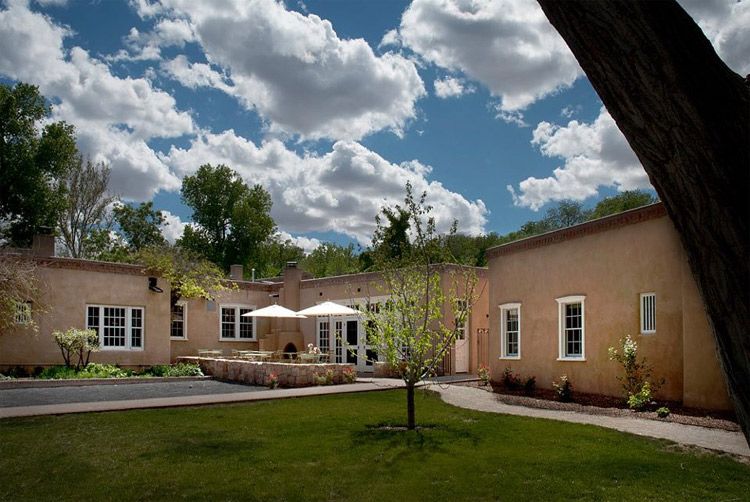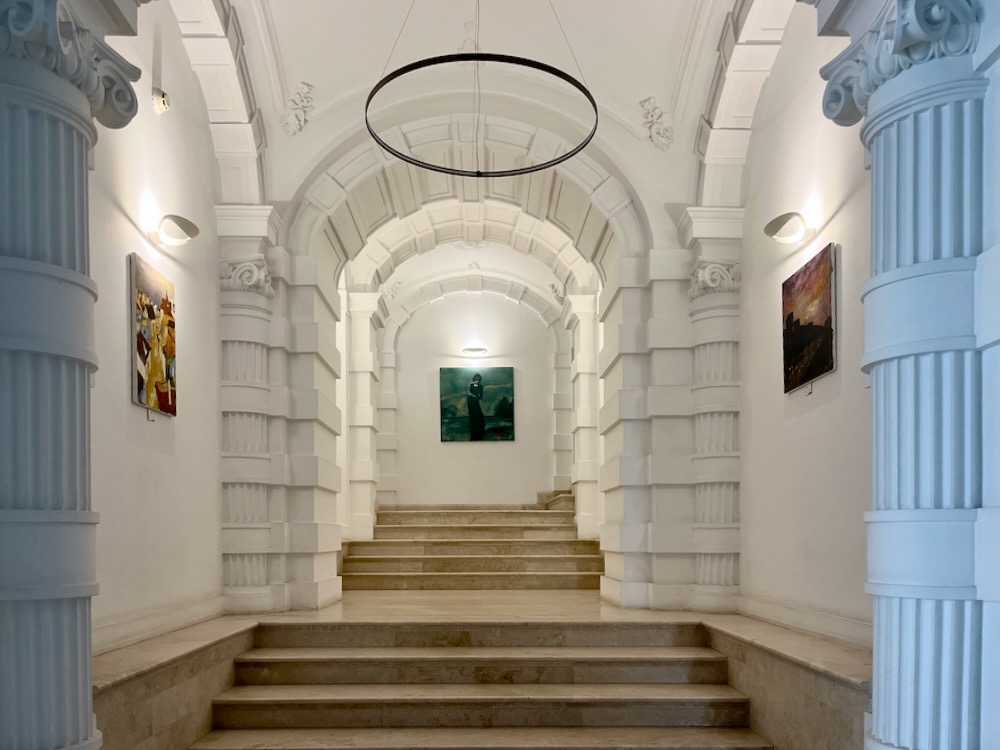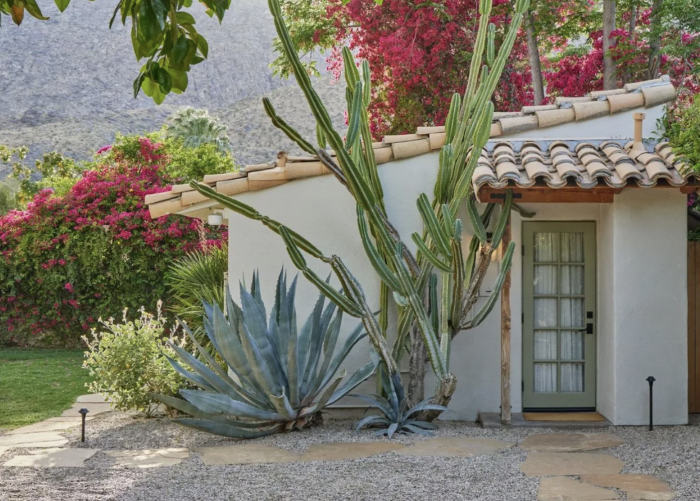
Photos Courtesy of Los Poblanos Inn
There's a new trend in travel simmering across the States: luxury farm stays. That is, splendid and charming accommodations right on property where grapes and cabbage grow and goats and cows graze. It's dining so close to the farm that you could take your fork, lean out the window, and pluck the berries for the house-made granola. It's rooms so cozy and cared for that every soap, linen, and candle is made just steps away. I couldn't be more pleased.

Photo credit: Josh Hailey
"Agri-tourism" isn't anything new, particularly to Europeans. The rise of its allure and growth in the luxury segment is now starting to attracting Americans. Los Poblanos Inn, located in the lush riverbed of the Rio Grande in Albuquerque, New Mexico, was my most recent delightful "farm stay."

The Farm: Many high-end properties boast a spa, a golf course, or a swanky restaurant as their main attraction. At Los Poblanos Inn, the 25 acres of farmland is reason enough to linger here. It's nearly impossible not to instantly adore this farm, its garden, and its Inn. From the rows of lavender to the ponds with 4-foot-tall lilies, one could wander in this Inns’ bountiful gardens, originally started in the 1930s, for hours.

Swings, benches, and little outcroppings under apple trees encourage guests to enjoy the simple splendor of gardens well tended by the Inn's chefs and gardeners. "Look! There's food on the floor!" I heard one little girl say to her mom, pointing to blackberries dusting the dirt pathway. On my early morning runs, I spotted chefs, in chef regalia, hauling in baskets of plucked greens for the day’s meals. At the Inn, as Executive Director Matt Rembe, mentioned, "If one of our chefs wants a certain ingredient, they go out there and grow it."

Photo credit: Sergio Salvador
Next to the pens of rambunctious goats and fluffy sheep, is the Farm Shop. Open to the public, the Shop is exquisitely stocked with the farm's lavender soaps, lotions and gifts. It also stocks kitchen and garden tools used by the Inn's staff. I'm not a shopper, but this is one little store I could spend some time in, tasting raspberry red chile jams and noshing on the Inn's addictive sweet and spicy pecans.

Photo credit: Mike Crane
The Inn constantly offers farm-focused events such as Barnyard Animals 101 (led by one of the most charming 14-year-old boys you'll ever meet) and Artisan cooking classes, which are often sold-out. I was lucky enough to catch a lavender distillation, where a few farm hands process the purple plants' luscious oil for sale.

Photo credit: Sergio Salvador
The Food: The fresher the food, the less it needs, and this is evident in Los Poblanos Inn's view of cuisine. Nature delivers the robust flavors organic produce and meat possess. The Inn's chefs artfully present dishes that include Espresso Rubbed Pork Ribs, Oven Dried Isleta Pink Tomatoes, and Cinnamon Maple Bacon Bread Pudding.

Photo credit: Mike Crane
Menus are seasonal, of course, not lengthy, and proudly list the local contributing farms. I admire the skill it takes for a chef relying strictly on farm produce (vs. a Sysco truck) who must sometimes improvise a menu item, depending on the supply of what's outside. I love the use of "Field Plates" and "Farm Salads," daily creations on the chef's whim and testament to the "roll up your sleeves" perspective of developing menus.

Photo credit: Sergio Salvador
Executive Chef Jonathan Perno is hands-on at the Inn, using his experience at a Berkley organic raised bed farm and years of work around the nation at top restaurants (Postrio in San Francisco, Sweet Basil in Vail, and The Château in Beaver Creek). House-made sausages, locally harvested honey, and crafted chocolates are just a few of Perno's credits at Los Poblanos Inn.

The Inn: Beyond its allure to foodies, Los Poblanos Inn attracts a set of architectural enthusiasts. John Gaw Meem, the Santa Fe based architect considered the 20th century’s most influential designer of New Mexico architecture, designed the Inn’s historic accommodations in the 1930s. Impeccably maintained, these rooms showcase Meem’s signature designs: kiva fireplaces, carved ceiling beams, and curved, smooth lines.

 In collaboration with Meem, Walter Gilbert created the massive wrought iron fixtures, including the garden gates, that still remain. The Inn’s gardens, designed by Harvard’s first female graduate of landscape architecture, Rose Greely, were also created in the 1930s and remains Greely’s only known work in the Southwest. I appreciate a property with a rich history still beloved by its current owners. A few years ago, the Inn expanded with the addition of its Farm Suites, modeled off of its 1930s dairy building.
In collaboration with Meem, Walter Gilbert created the massive wrought iron fixtures, including the garden gates, that still remain. The Inn’s gardens, designed by Harvard’s first female graduate of landscape architecture, Rose Greely, were also created in the 1930s and remains Greely’s only known work in the Southwest. I appreciate a property with a rich history still beloved by its current owners. A few years ago, the Inn expanded with the addition of its Farm Suites, modeled off of its 1930s dairy building.














